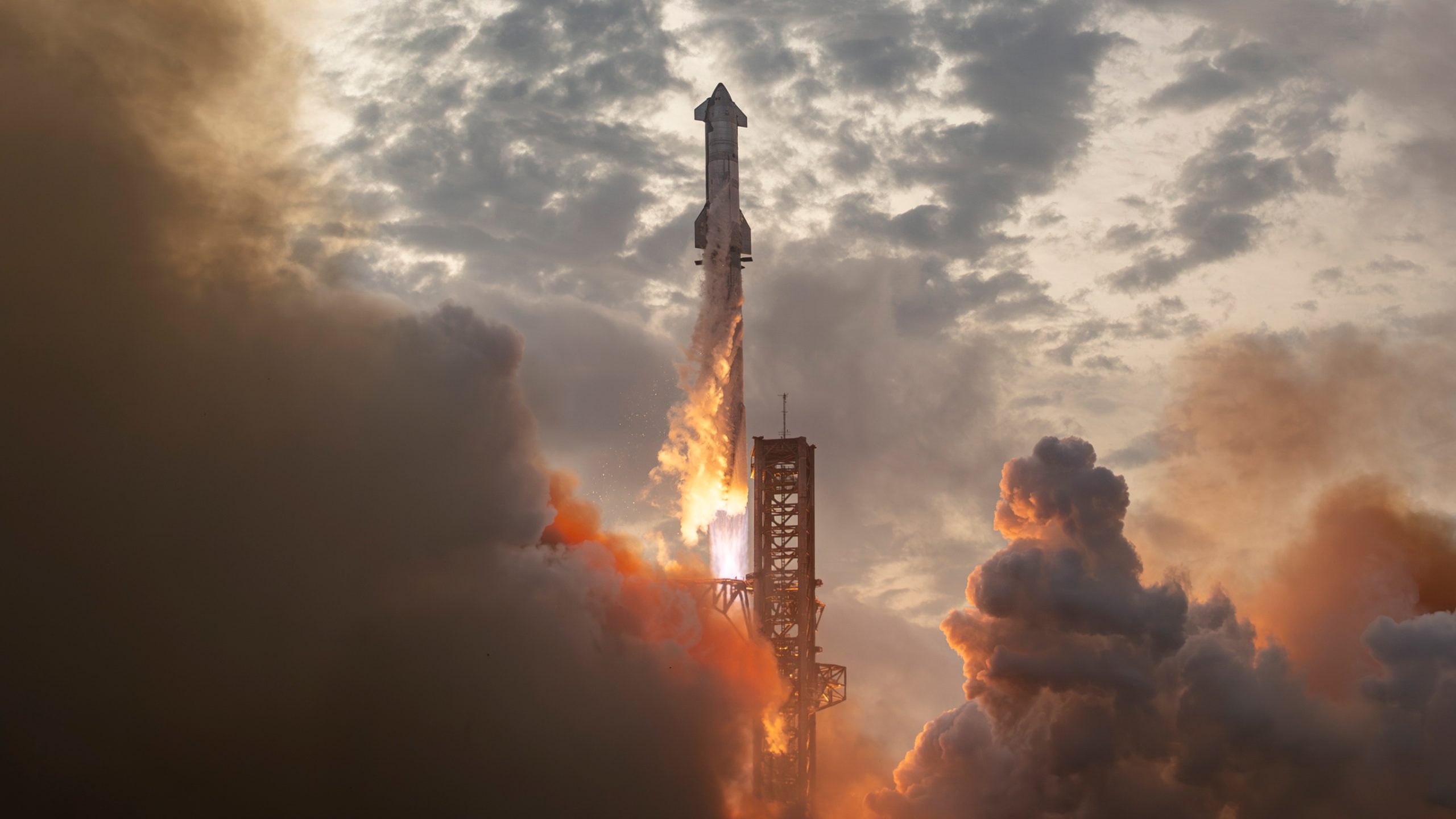
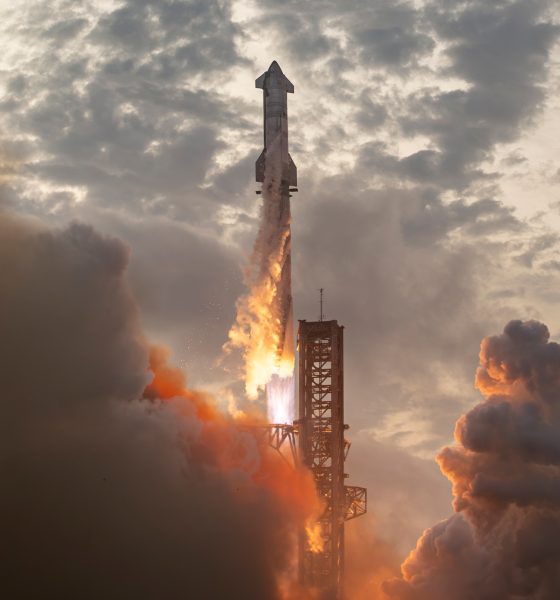
News
SpaceX reveals new details on Starship’s third test flight
SpaceX has revealed some new information regarding the third test flight of its massive Starship rocket.
The flight, which took place from Starbase, Texas, yesterday morning at 8:25 am CT, capitalized on previous test flights and accomplished a host of new objectives.
All 33 Raptor engines lit in a staggered sequence, and once throttled up, the world’s biggest rocket took flight for the third time.
All 33 Raptor engines burning (Credit: SpaceX)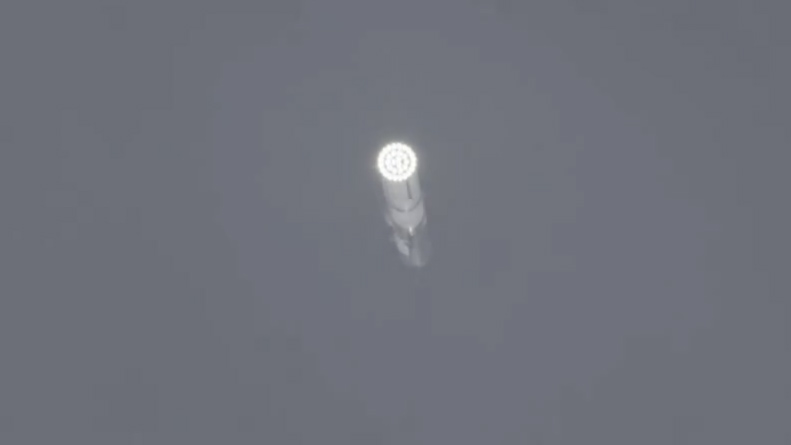
As Starship climbed into the South Texas skies, the 33 engines continued to operate nominally until the hot stage separation, in which 30 of Super Heavy’s engines shut down as Starship lit its 3 sea-level and 3 vacuum Raptor engines and continued to space.
For the first time, the Super Heavy first stage, Booster 10, successfully performed a boost back burn and aimed for a splashdown just East of the launch pad in the Gulf of Mexico. According to the data displayed on the webcast, the booster reached a peak speed of 5750 km/h and an altitude of 106 km.
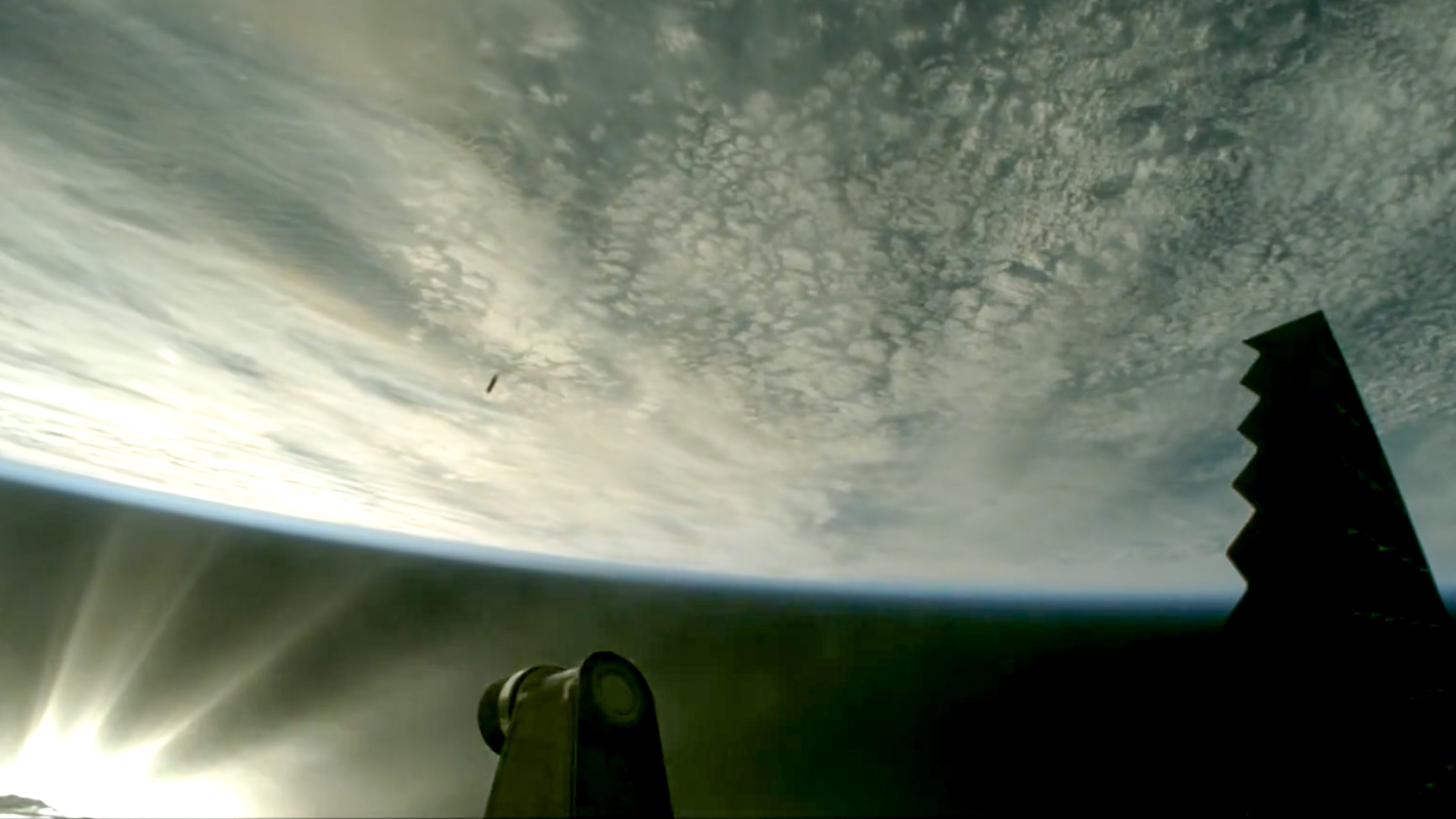
Super Heavy performing the boost backburn while Starship heads down range (Credit: SpaceX)
Unlike the Falcon 9, the Super Heavy is so big it does not need to do an entry burn however in one of the last bits of data available on the webcast, it showed the booster attempted to begin its landing burn around 1 km in altitude with only 3 engines lighting and 2 shutting off almost immediately after.
SpaceX has since confirmed that Booster 10 experienced a rapid unscheduled disassembly just 462 meters above the water’s surface, and it is likely that what remained of the booster hit the water at nearly the speed of sound.
While Booster 10 was meeting its fate in the Gulf of Mexico following a great performance, Ship 28 continued to burn all 6 of its Raptor engines and completed its first full-duration burn, inserting itself into its proper sub-orbital trajectory.
Starship just after Raptor shutdown (Credit SpaceX)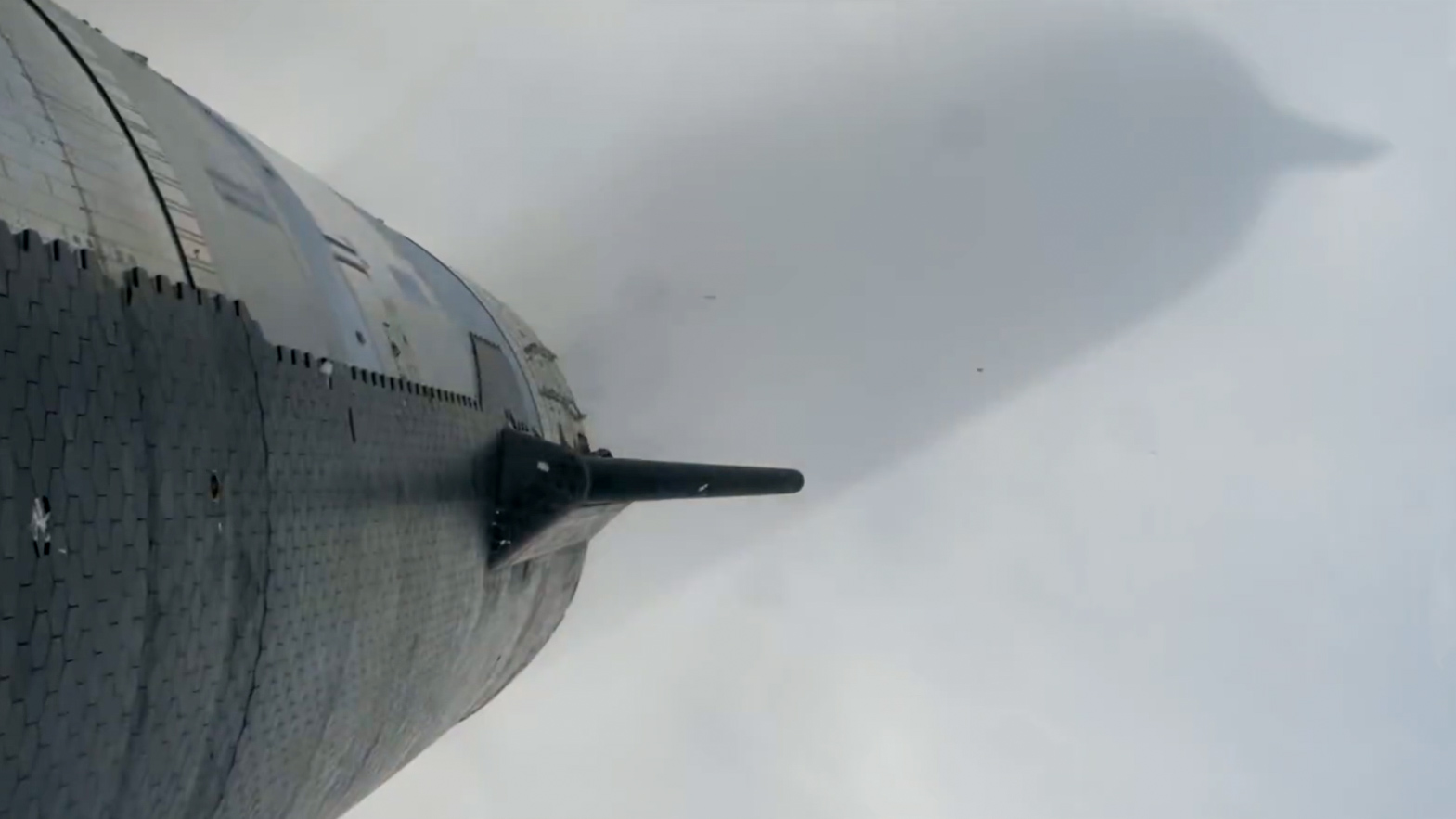
Ship 28 then began its coast phase and started a series of tests. The payload bay door, aka pez door, designed to eventually eject the full-size Starlink satellites, was first commanded to open 12 minutes into the flight. SpaceX has yet to confirm whether it managed to fully open/close the door. At 30:18 into the mission, the door appears to have dislodged into the payload bay, and we no longer got any live views inside the ship.
The next task was to re-light the first-ever Raptor engine in space, but due to the vehicle’s roll rates, SpaceX decided to postpone this until a future flight.
Ship 28 then began atmospheric entry, but the ship seemed to be partially out of control with the spin and eventually began to build up plasma. The heat shield was only half exposed, and the rest was bare stainless steel, taking the brunt of the forces of re-entry.
Ship 28 begins atmospheric re-entry (Credit SpaceX)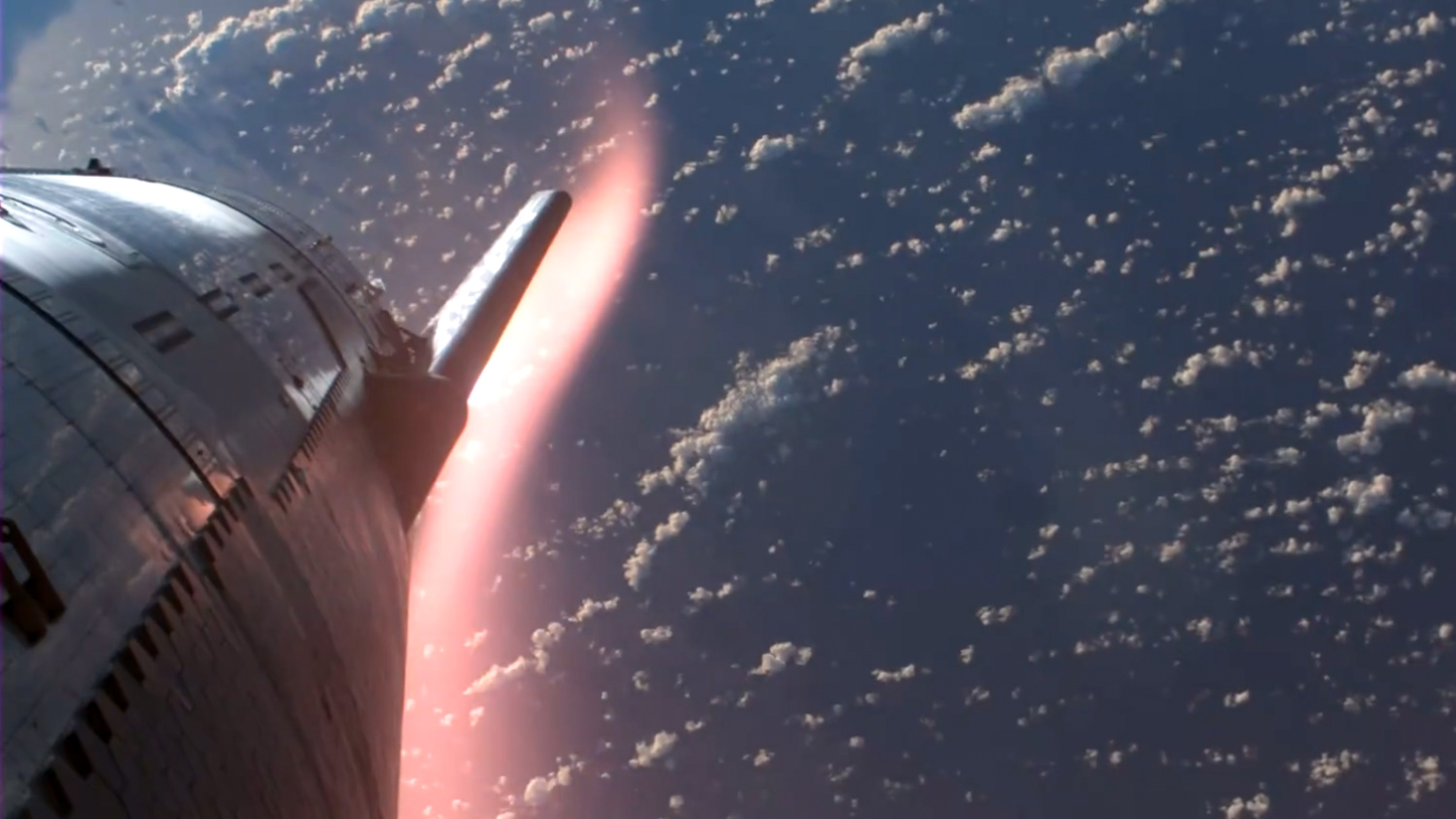
Thanks to Starlink terminals on board, SpaceX was able to provide incredible live views from a camera located on one of Starship’s flaps. The plasma began as a faint pink glow before rapidly growing and enveloping the vehicle while still maintaining a good data connection which has never before been possible.
Overall, SpaceX made many great advancements on this third test flight and will look to complete all of these on the fourth test flight, including a smooth splashdown of the Super Heavy booster and successful re-entry through the atmosphere for Starship.
When do you think the 4th test flight will occur, and will they fix the issues encountered during flight 3?
Questions or comments? Shoot me an email at rangle@teslarati.com, or Tweet me @RDAnglePhoto.

Cybertruck
Tesla Cybertruck earns IIHS Top Safety Pick+ award
To commemorate the accolade, the official Cybertruck account celebrated the milestone on X.

The Tesla Cybertruck has achieved the Insurance Institute for Highway Safety’s (IIHS) highest honor, earning a Top Safety Pick+ rating for 2025 models built after April 2025.
The full-size electric pickup truck’s safety rating is partly due to the vehicle’s strong performance in updated crash tests, superior front crash prevention, and effective headlights, among other factors. To commemorate the accolade, the official Cybertruck account celebrated the milestone on X.
Cybertruck’s IIHS rating
As per the IIHS, beginning with 2025 Cybertruck models built after April 2025, changes were made to the front underbody structure and footwell to improve occupant safety in driver-side and passenger-side small overlap front crashes. The moderate overlap front test earned a good rating, and the updated side impact test also received stellar marks.
The Cybertruck’s front crash prevention earned a good rating in pedestrian scenarios, with the standard Collision Avoidance Assist avoiding collisions in day and night tests across child, adult crossing, and parallel paths. Headlights with high-beam assist compensated for limitations, contributing to the top award.
Safest and most autonomous pickup
The Cybertruck is one of only two full-size pickups to receive the IIHS’ Top Safety Pick + rating. It is also the only one equipped with advanced self-driving features via Tesla’s Full Self-Driving (Supervised) system. Thanks to FSD, the Cybertruck can navigate inner city streets and highways on its own with minimal supervision, adding a layer of safety beyond passive crash protection.
Community reactions poured in, with users praising the vehicle’s safety rating amidst skepticism from critics. Tesla itself highlighted this by starting its X post with a short clip of a Cybertruck critic who predicted that the vehicle will likely not pass safety tests. The only question now is, of course, if the vehicle’s Top Safety Pick+ rating from the IIHS will help the Cybertruck improve its sales.
News
Tesla stands to gain from Ford’s decision to ditch large EVs
Tesla is perhaps the biggest beneficiary of Ford’s decision, especially as it will no longer have to deal with the sole pure EV pickup that outsold it from time to time: the F-150 Lightning.
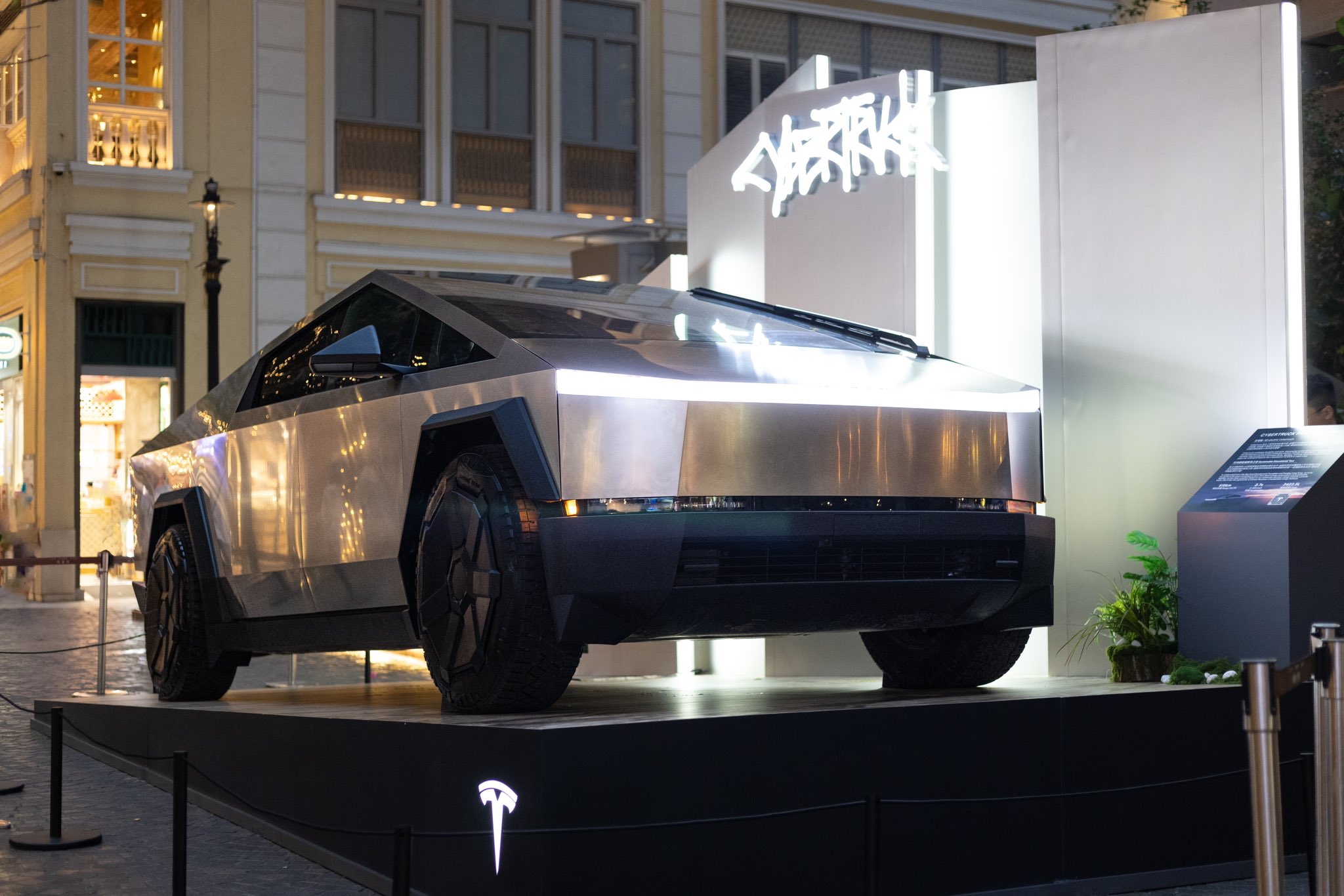
Ford’s recent decision to abandon production of the all-electric Ford F-150 Lightning after the 2025 model year should yield some advantages for Tesla.
The Detroit-based automaker’s pivot away from large EVs and toward hybrids and extended-range EVs that come with a gas generator is proof that sustainable powertrains are easy on paper, but hard in reality.
Tesla is perhaps the biggest beneficiary of Ford’s decision, especially as it will no longer have to deal with the sole pure EV pickup that outsold it from time to time: the F-150 Lightning.
Here’s why:
Reduced Competition in the Electric Pickup Segment
The F-150 Lightning was the Tesla Cybertruck’s primary and direct rival in the full-size electric pickup market in the United States. With Ford’s decision to end pure EV production of its best-selling truck’s electric version and shifting to hybrids/EREVs, the Cybertruck faces significantly less competition.
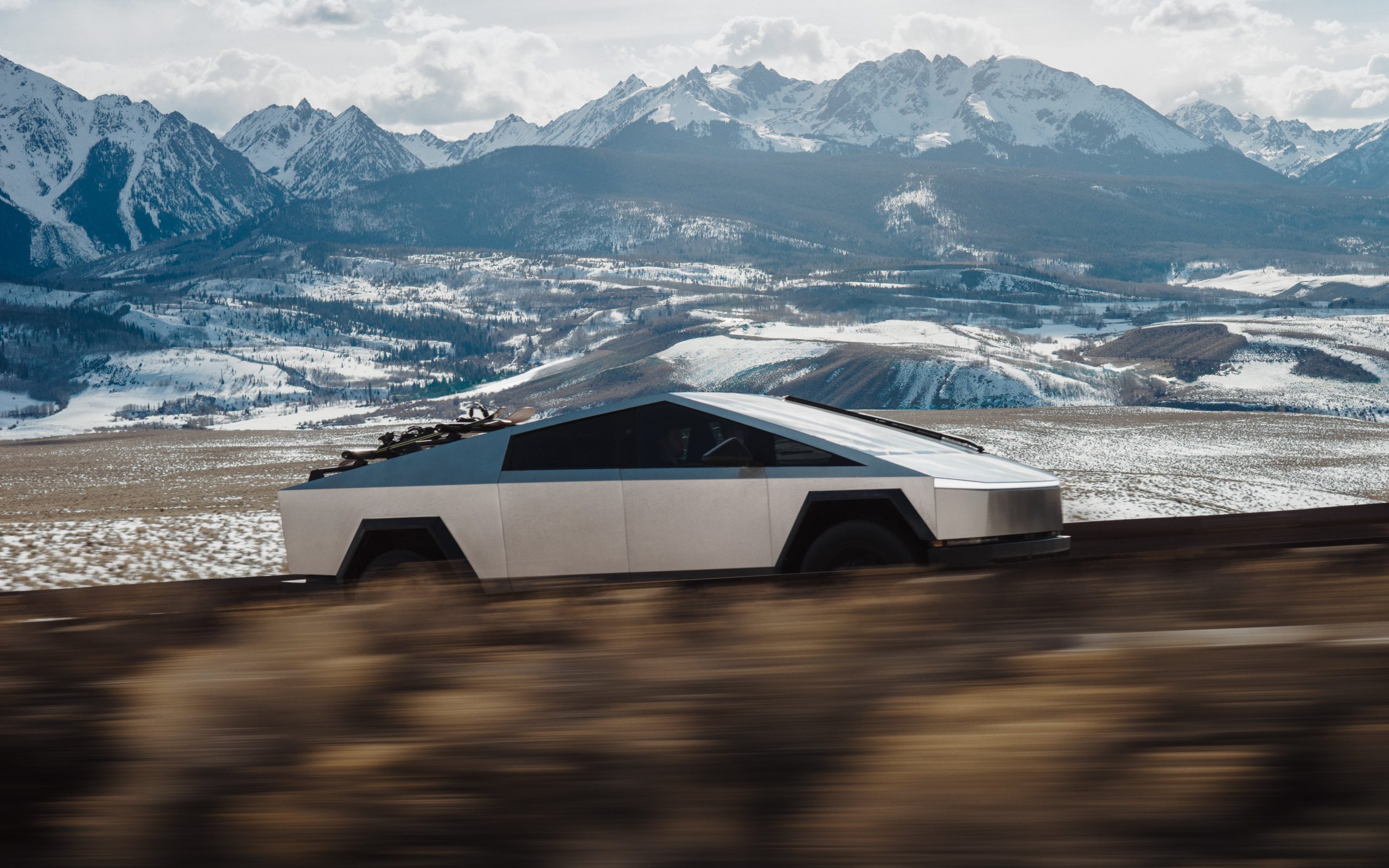
Credit: Tesla
This could drive more fleet and retail buyers toward the Cybertruck, especially those committed to fully electric vehicles without a gas generator backup.
Strengthened Market Leadership and Brand Perception in Pure EVs
Ford’s pullback from large EVs–citing unprofitability and lack of demand for EVs of that size–highlights the challenges legacy automakers face in scaling profitable battery-electric vehicles.
Tesla, as the established leader with efficient production and vertical integration, benefits from reinforced perception as the most viable and committed pure EV manufacturer.
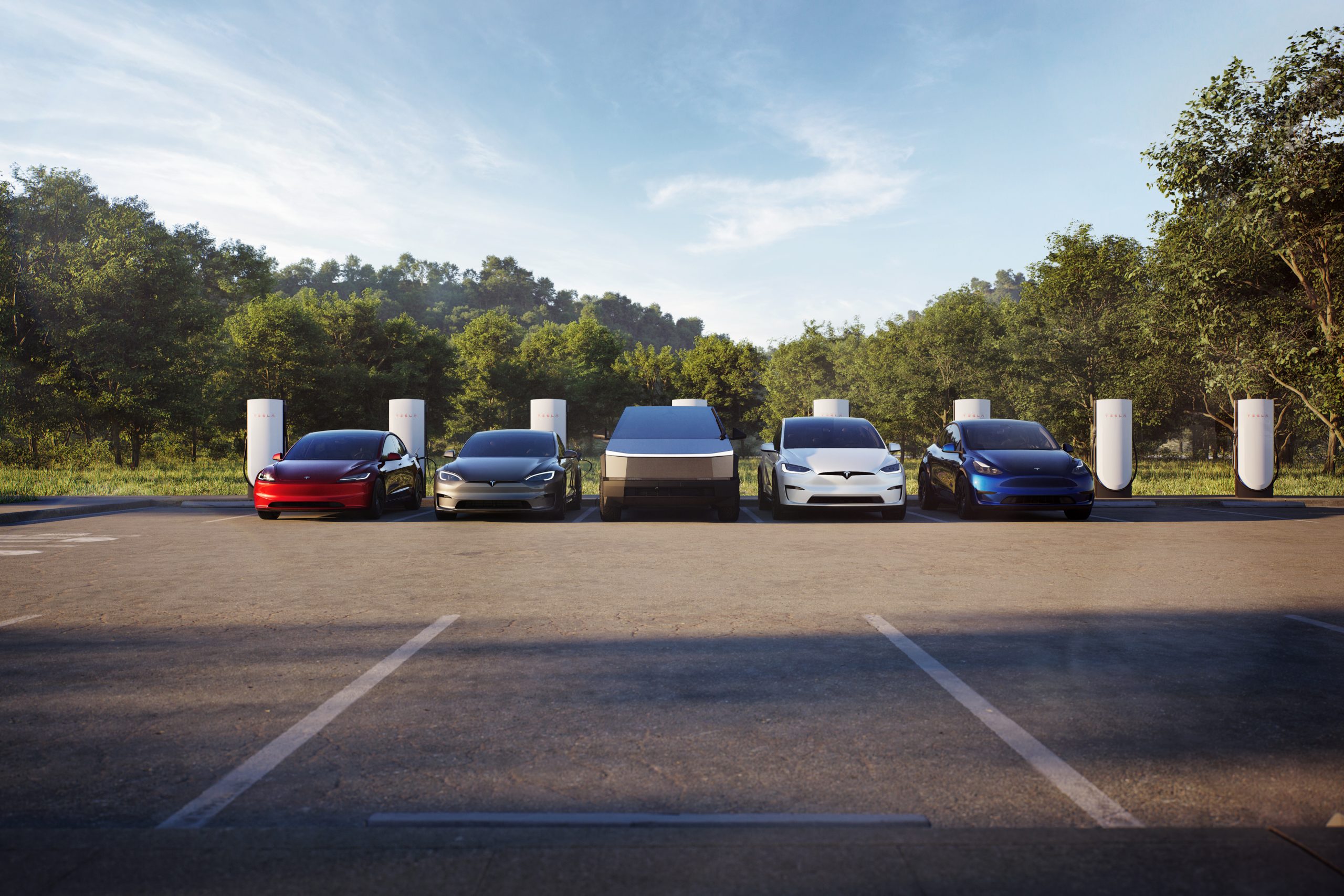
Credit: Tesla
This can boost consumer confidence in Tesla’s long-term ecosystem over competitors retreating to hybrids. With Ford making this move, it is totally reasonable that some car buyers could be reluctant to buy from other legacy automakers.
Profitability is a key reason companies build cars; they’re businesses, and they’re there to make money.
However, Ford’s new strategy could plant a seed in the head of some who plan to buy from companies like General Motors, Stellantis, or others, who could have second thoughts. With this backtrack in EVs, other things, like less education on these specific vehicles to technicians, could make repairs more costly and tougher to schedule.
Potential Increases in Market Share for Large EVs
Interestingly, this could play right into the hands of Tesla fans who have been asking for the company to make a larger EV, specifically a full-size SUV.
Customers seeking large, high-capability electric trucks or SUVs could now look to Tesla for its Cybertruck or potentially a future vehicle release, which the company has hinted at on several occasions this year.
With Ford reallocating resources away from large pure EVs and taking a $19.5 billion charge, Tesla stands to capture a larger slice of the remaining demand in this segment without a major U.S. competitor aggressively pursuing it.
News
Ford cancels all-electric F-150 Lightning, announces $19.5 billion in charges
“Rather than spending billions more on large EVs that now have no path to profitability, we are allocating that money into higher returning areas, more trucks and van hybrids, extended range electric vehicles, affordable EVs, and entirely new opportunities like energy storage.”
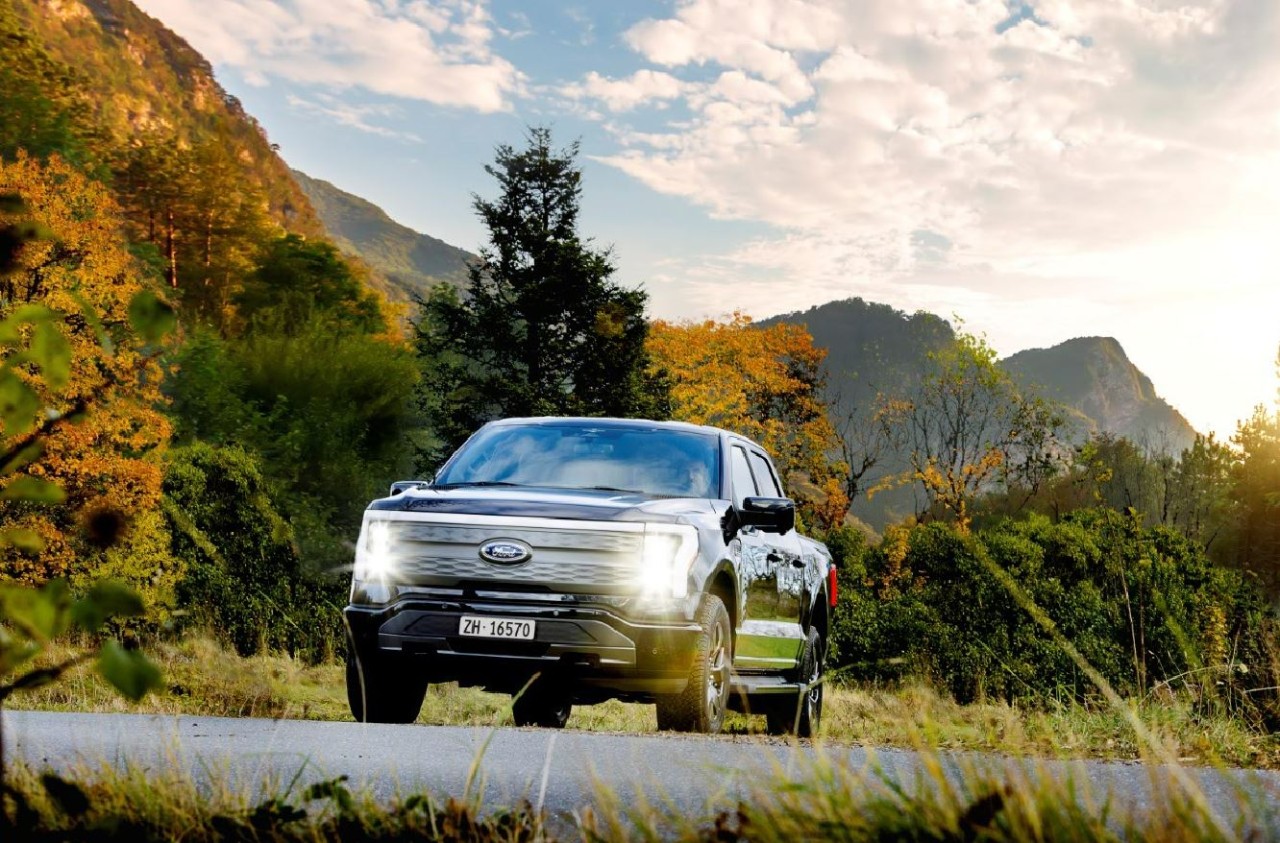
Ford is canceling the all-electric F-150 Lightning and also announced it would take a $19.5 billion charge as it aims to quickly restructure its strategy regarding electrification efforts, a massive blow for the Detroit-based company that was once one of the most gung-ho on transitioning to EVs.
The announcement comes as the writing on the wall seemed to get bolder and more identifiable. Ford was bleeding money in EVs and, although it had a lot of success with the all-electric Lightning, it is aiming to push its efforts elsewhere.
It will also restructure its entire strategy on EVs, and the Lightning is not the only vehicle getting the boot. The T3 pickup, a long-awaited vehicle that was developed in part of a skunkworks program, is also no longer in the company’s plans.
Instead of continuing on with its large EVs, it will now shift its focus to hybrids and “extended-range EVs,” which will have an onboard gasoline engine to increase traveling distance, according to the Wall Street Journal.
“Ford no longer plans to produce select larger electric vehicles where the business case has eroded due to lower-than-expected demand, high costs, and regulatory changes,” the company said in a statement.
🚨 Ford has announced it is discontinuing production of the F-150 Lightning, as it plans to report a charge of $19.5 billion in special items.
The Lightning will still be produced, but instead with a gas generator that will give it over 700 miles of range.
“Ford no longer… pic.twitter.com/ZttZ66SDHL
— TESLARATI (@Teslarati) December 15, 2025
While unfortunate, especially because the Lightning was a fantastic electric truck, Ford is ultimately a business, and a business needs to make money.
Ford has lost $13 billion on its EV business since 2023, and company executives are more than aware that they gave it plenty of time to flourish.
Andrew Frick, President of Ford, said:
“Rather than spending billions more on large EVs that now have no path to profitability, we are allocating that money into higher returning areas, more trucks and van hybrids, extended range electric vehicles, affordable EVs, and entirely new opportunities like energy storage.”
CEO Jim Farley also commented on the decision:
“Instead of plowing billions into the future knowing these large EVs will never make money, we are pivoting.”
Farley also said that the company now knows enough about the U.S. market “where we have a lot more certainty in this second inning.”








